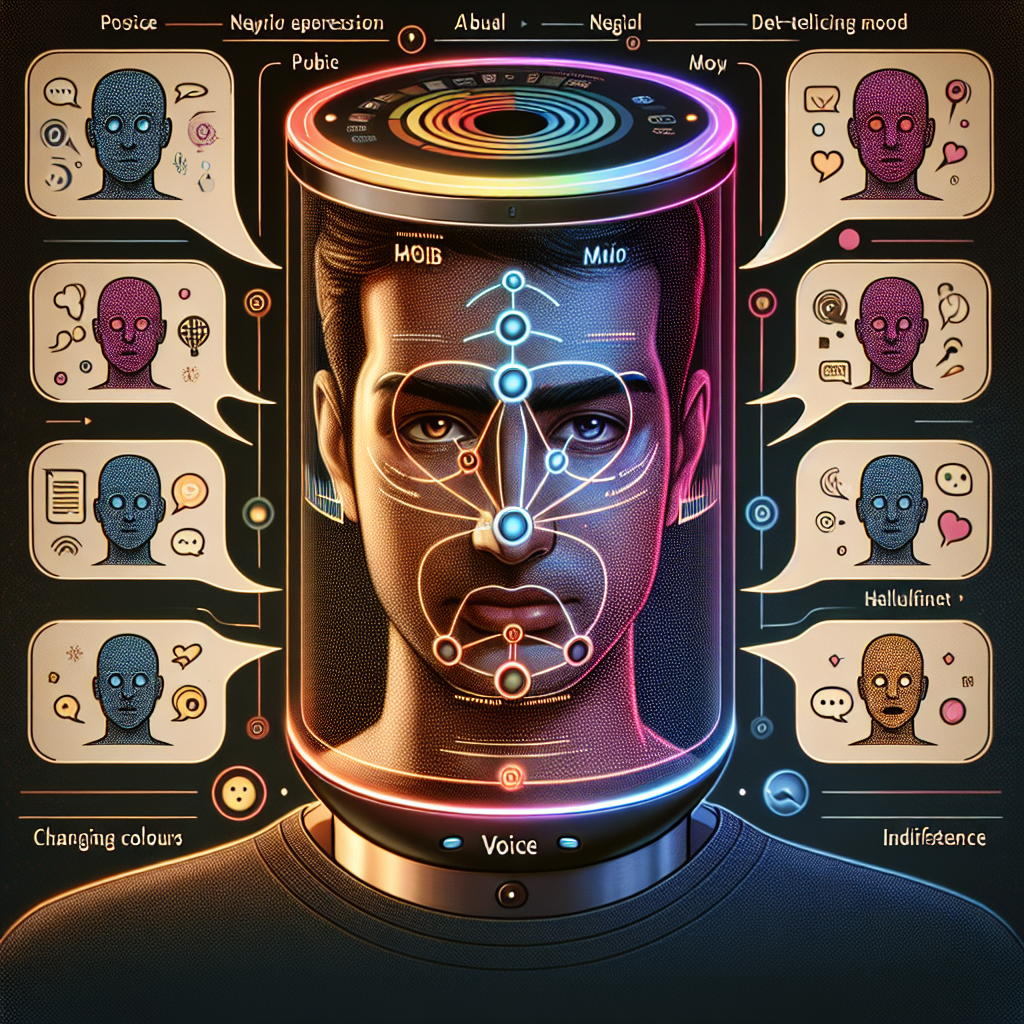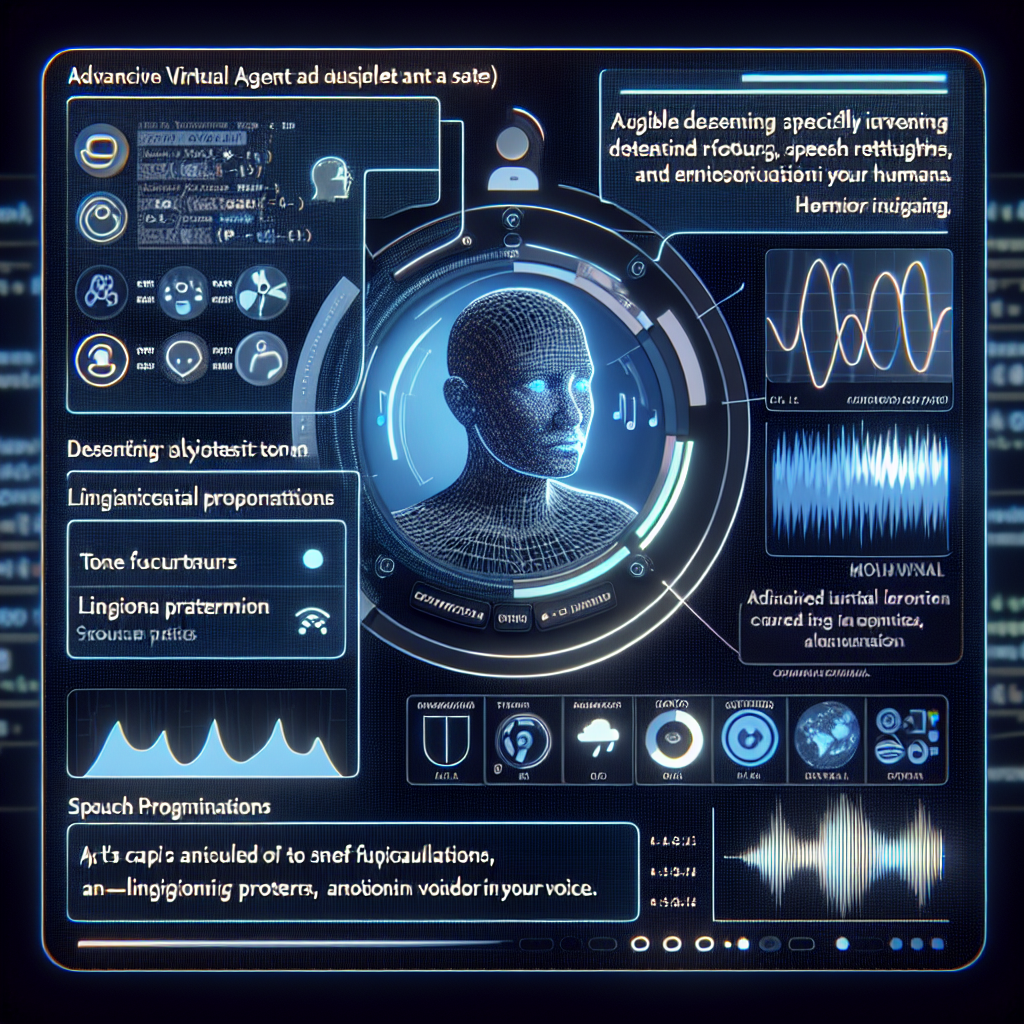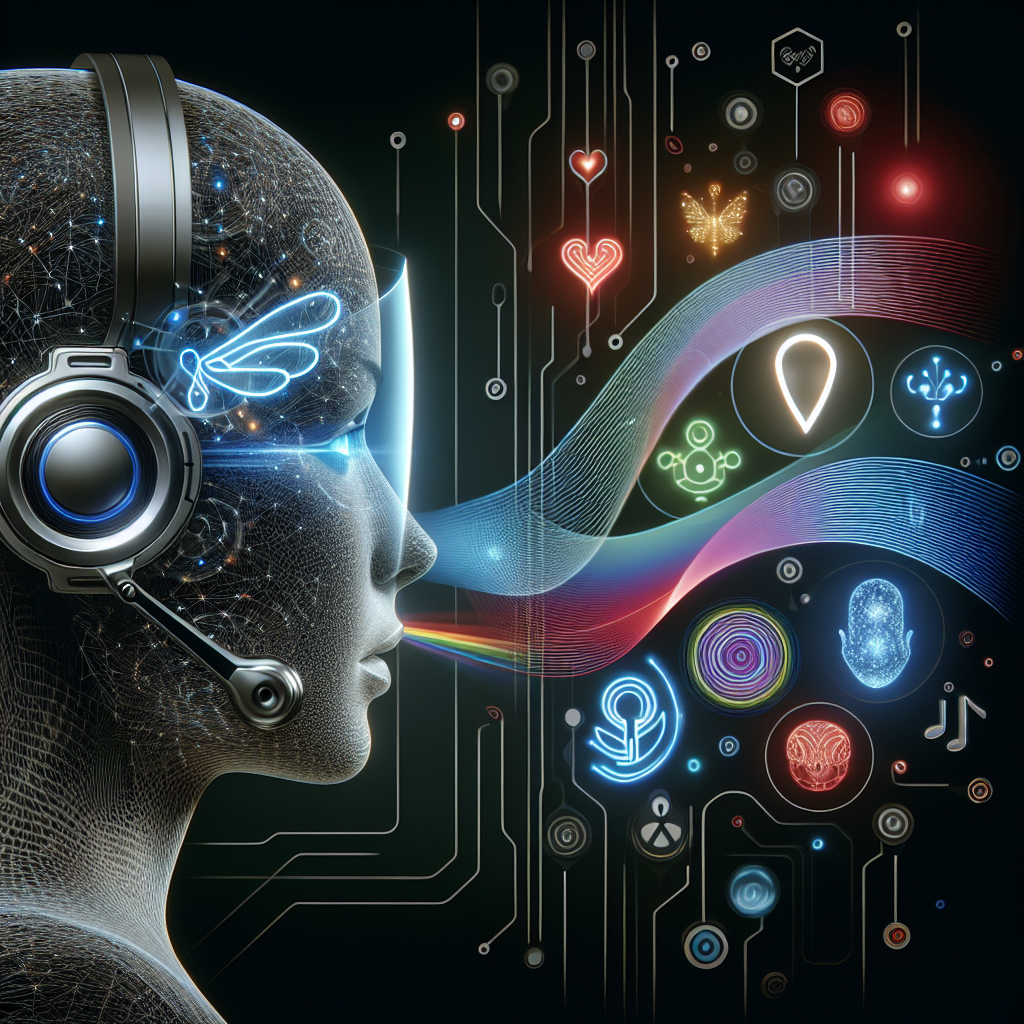
In today's digital era, technology has moved beyond just understanding commands and providing responses. One such advancement is voice-based mood detection technology, which signifies a major step forward in human-computer interaction.
Emotion recognition through speech isn't a new concept in Artificial Intelligence (AI). However, recent enhancements in AI and machine learning technologies have resulted in a more sophisticated and precise detection of subtle emotional cues in human speech. Voice-based mood detection is capable of ascertaining the speaker's current mood by analyzing variations in tonal, verbal, and linguistic patterns. This provides a pivotal advantage to chatbots and virtual agents.

Why does detecting a user's mood matter in the first place? Essentially, when a virtual agent is able to comprehend a user's emotional state and alter its responses accordingly in real-time, it improves user experience. The more accurately an agent can predict and respond to a user's emotions, the better chances it holds to provide empathy, relevance, and support. Needless to say, it significantly enhances customer service interactions and fosters humanized AI interactions.
This form of emotionally intelligent engagement is incredibly valuable for businesses aiming to provide superior customer service. It poses the potential to drive customer satisfaction, boost brand loyalty, and enhance overall customer sentiment towards a business. Moreover, it provides businesses with indelible insights into customer behavior, which can be leveraged to drive product/service improvement and marketing strategies.
Undoubtedly, the horizon of voice-based mood detection technology is vast and it presents enormous potential to transcend the boundaries of humanly possible communication and interaction patterns in the digital landscape.
When it comes to voice-based mood detection, a combination of advanced technology and carefully refined algorithms is at work. At its core, the process involves two critical steps: voice tone analysis and speech pattern analysis. Voice tone involves examining various factors, such as pitch, volume, speed, and rhythm. These elements can reveal a lot about a user's emotional state. For example, a loud and fast voice may indicate excitement or agitation, while a slow, low-pitched voice could suggest sadness or fatigue.
Similarly, speech patterns provide additional crucial insight into an individual's mood. Pauses, tremors, breath patterns, and even the specific words and phrases someone chooses can all hold emotional significance. As various studies suggest, the emotional context of speech significantly influences our interpretation of a message. By decoding these patterns, AI can make educated guesses about a person's state of mind.
By leveraging Natural Language Processing (NLP) and machine learning algorithms, AI systems can analyse and interpret these patterns in real-time. They can recognise particular emotional indicators in both voice tone and speech patterns, thereby determining the mood of the speaker. This interpretation then guides the AI in formulating an emotionally appropriate response.
Interpretation of this emotional data is arguably the most challenging — and important — aspect of mood detection. As humans, we've been learning to recognise and respond to emotional cues all our lives. For an AI, this understanding must be developed through repeated exposure and constant refinement of algorithms. Nevertheless, massive strides have been made in this field. Today's AI technology can detect a wide array of emotions with remarkable accuracy, ensuring seamless and empathetic human-AI interactions.
In essence, the realm of voice-based mood detection has undergone exponential advancements, turning the stuff of science fiction into a present-day reality. By capturing and decoding emotional data with precision, AI has effectively evolved to incorporate a comprehensive understanding of human moods, facilitating tailored and emotionally nuanced responses in real-time.
In the emerging ecosystem of AI-powered communication, voice-based mood detection plays a pivotal role. This sophisticated technology is integrated into AI agents, fundamentally enhancing their capacity to understand and respond to user emotions in real-time. It's a revolutionary leap towards achieving the much-needed empathy in AI interactions, and some practical examples spotlight how AI solutions are already leveraging this.

Companies like Cognigy, use natural language understanding (NLU) and sentiment analysis to gauge emotional states from a user's voice and then tailor the AI's response accordingly. This provides an unprecedented level of personalization, helping brands provide emotionally-attuned, satisfactory customer experiences. Mood detection, thus, opens up avenues for interactions that truly speak to user sentiments.
Meanwhile, healthcare applications like Ellipsis Health, employ similar techniques far beyond the realm of marketing and customer service. These AI tools use voice cues for early detection of anxiety and depression, transforming voice data into actionable mental health insights. So, voice-based mood detection not only facilitates better communication but also potentially contributes to early intervention in mental health.
This technology sees innovative use in Amazon’s Alexa, where it imbues voice assistants with the capacity to modulate their interactions based on the detected emotional state of the user. By doing so, it contributes towards an experience that is more intuitive, responsive, and emotionally aware.
With more tech giants and startups investing in this direction, voice-based mood detection is poised to usher in a new era of empathetic and personalized AI interactions. By enabling AI agents to listen to and interpret user emotions, we are re-calibrating the way humans and AI communicate with each other.
In the dynamic landscape of customer service, personalization is key. One tool that's empowering this shift towards tailored experiences is voice-based mood detection. A cutting edge blend of artificial intelligence and machine learning, this technology can analyze vocal qualities, detect mood, and adjust responses in real-time.
One of the significant advantages of mood detection in customer service is immense improvement in customer satisfaction. By discerning a customer's mood, customer service agents can modify their approach accordingly. A disgruntled customer might receive more empathy and prompt resolution, while a happy customer can be engaged differently to enhance their experience. This dynamic communication leads to an improved understanding of the customer's needs, providing a platform for a more positive interaction.
Additionally, this technology paves the way for increased efficiency. With the agents adapting their responses based on the detected mood, the response time is dramatically reduced, and a higher resolution rate is secured. In essence, it takes the guesswork out of response strategies, saving both time and resources. This translates into a leaner, more effective protocol for managing customer interactions.
The use of mood detection in customer service is not a thought experiment; many companies have already implemented this with resounding success. For instance, a recent case study outlined how real-time mood detection information helped an organization achieve a double-digit increase in customer satisfaction levels. Through the substantial reduction in negative encounters and a marked improvement in agent performance.
In conclusion, the role of voice-based mood detection in creating personalized customer experiences cannot be overstated. As technology continues to evolve and more research is conducted, the incorporation of mood detection in customer service strategies will only grow more pronounced. Factoring in mood detection will lead to better customer satisfaction, increased efficiency and successful real-time adjustments in communication strategies.
As truly outstanding as voice-based mood detection technologies may seem, they're not without their share of challenges and ethical considerations. In the forefront of these issues, we find privacy concerns, the accuracy of mood analysis, and the potential for misuse.

Privacy poses a significant challenge to this technology. Detailed voice analysis can reveal not just the apparent mood but potentially sensitive information such as health status, age, and identity, leading to intense debates over the balance between technological innovation and the protection of individual privacy rights.
Another significant challenge lies in ensuring the accuracy of the mood detection technology. The variances in an individual's tonal nuances, dialects, and expression of emotions can often mislead mood detection algorithms, leading to unsatisfactory or inaccurate analysis. This raises the question of whether technology can truly grasp the intricacies of human emotion and mood.
The third major concern associated with voice-based mood detection is the potential for misuse. There is a fear that such technologies could be used unethically for manipulating emotions, targeted marketing or even for illegal surveillance. In a world rapidly increasing its reliance on automated systems, establishing accountable checks and measures is vital to prevent the misuse of advanced technologies.
A balanced discourse needs to be encouraged to address these challenges and ethical dilemmas. Voice-based mood detection technology is indeed a significant leap forward in AI and communication fields, but it also opens up a Pandora's Box of considerations that we, as a society, must address head-on for responsible and ethical use.
The rapidly advancing landscape of artificial intelligence has witnessed a recent surge in Emotion AI, a branch that focuses on harnessing the emotive nuances of the human voice. It's becoming increasingly essential in sectors such as customer service and mental health care, but its potential extends far beyond. If we glimpse into the future of real-time emotional analysis, we find promising vistas filled with technological advancements that could profoundly affect our daily lives. This isn't about reading minds - it's about understanding emotions, moods, and how they drive human interactions.
One area poised for exponential growth is using emotion AI for mood detection. Currently, this technology enables intelligent agents to tailor responses in real-time based on an individual’s mood. Improvements in mood detection technologies–fueled by Deep Learning (link: Applications of Deep Learning in Emotion AI)–will usher in an era where machines can empathize with human emotional states at a much granular level.
Coupling emotion AI with other rapidly-evolving technologies like IoT in health-tech can potentially revolutionize the mental health landscape. Imagine a wearable device that monitors your emotional state and provides assistance when it detects stress or anxiety. It's like having a personal psychotherapist at your fingertips.
Even outside the health sector, there's no limit to the possible applications for real-time mood detection. In education, emotion AI could be used to adjust the pace of teaching to a student’s mood. In business, sales and marketing teams could analyze customer sentiment for superior strategy formulation.
Will artificial intelligence ever rival human emotional acuity? Perhaps, but that's a question for another day. What we know for certain is that the future of real-time emotional analysis holds immense promise. As it blossoms, technologies like Emotion AI will carry us into an era where machines don't just understand our commands–they comprehend our feelings.
Start your free trial for My AI Front Desk today, it takes minutes to setup!








